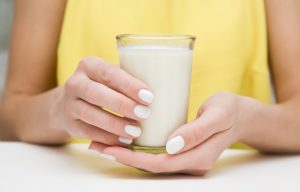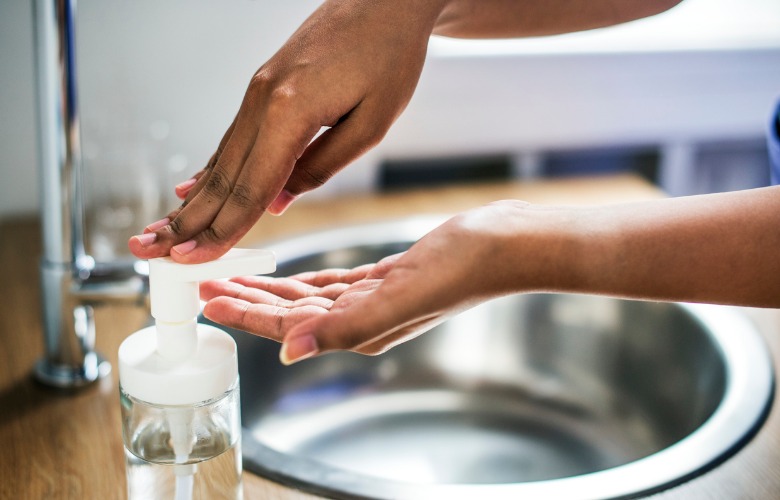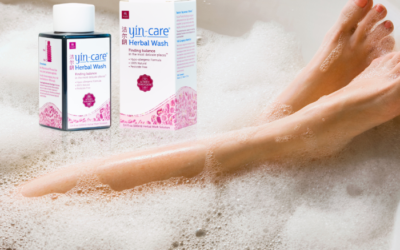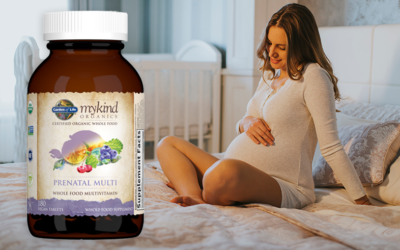Are Antimicrobials Making You Less Healthy?
Everywhere you turn you see antimicrobial hand wipes and sanitizers. Antimicrobials are now being added into everything from your soap to your linens, and even your children’s toys. You feel good when you buy these items because it means fewer germs in your home.
You believe you are doing the right thing, the healthy thing. But, what if you are simply creating the problem you are trying to avoid?
Understanding antimicrobials
What are antimicrobials anyway?
- Antimicrobials include any agent that acts against a microorganism (these include bacteria, fungus, and viruses).
- Antimicrobials include antibiotics as well as antivirals, antifungals, and others. While antibiotics and antimicrobials are often use interchangeably, they are not the same thing.
- Antibiotics are a subset of antimicrobials. While antibiotics are generally derived from natural organisms, antimicrobials can be derived from natural or synthetic chemical sources.
- Antimicrobials are not necessarily bad. The problem comes from the overuse, as well as from certain types of antimicrobials that can cause more harm than good.
The Dangers of Antimicrobials
While some antimicrobials are natural and safe, others carry a higher risk.
Triclosan is a common antimicrobial, used in everything from toothpaste to clothing, yet it’s labeled by the Environmental Protection Agency (EPA) as a pesticide and considered a danger to the environment and human health (Williams, 2006).
Despite this, triclosan is likely found throughout your home in your soaps and cleaners. It’s been added to your linens, your children’s toys, and even your paint and wallpaper. Triclosan is so ubiquitous that you are literally breathing it.
Triclosan has been known to cause skin irritation and rash and it belongs to a class of chemicals suspected of causing cancer (Williams, 2006).
Studies have shown that triclosan causes thyroid dysfunction in rats. While similar studies on humans have not shown the same results they typically only examine the use of triclosan in one facet (commonly toothpaste) and do not consider the myriad of other ways that a person is exposed to this potentially toxic chemical (Cullinan et al, 2012).
While the full risks of triclosan are widely debated, what isn’t debated is that antibacterial and antimicrobial agents, such as triclosan, kill off all bacteria, good and bad (Williams, 2006). This can cause a host of problems in the short term, until those good bacterial can be rebuilt through the consumption of quality fermented foods and probiotics.
The result of the overuse of antimicrobials is the same as we’ve seen with antibiotics. That is, the over-use causes bacteria to genetically mutate to survive. This results in antibiotics and antimicrobials that no longer work. And, bacteria that become stronger and more difficult to control (Llor & Bjerrum, 2014).
The Dangers of Antibiotic Overuse

In recent years the prescription of antibiotics has increased, with prescriptions often given unnecessarily. A visit to the doctor for what is really a viral infection is often met with a prescription for antibiotics. The antibiotics do nothing for the infection, which eventually dies out on its own. However, in the meantime, the antibiotics have caused the bacteria in your body’s microbiome to fight to survive.
This creates not only drug-resistant strains of bacteria, but also results in increased and longer hospital stays, worsened infections, complications, and sometimes death (Llor & Bjerrum, 2014).
Additionally, most animals used for food are given large doses of antibiotics and antimicrobials during growth stages. It is believed by the CDC and FDA that the increased prevalence of several major strains of bacteria (including salmonella and e. coli) is linked to the overuse of antibiotics in animals used for food.
Not All Bacteria Are Bad
When you use an antimicrobial or antibiotic you aren’t just killing off the bad germs, you are killing all the bacteria and microbes in your microbiome.
The human body is literally covered (externally and internally) in microorganisms, primarily bacteria (Huttenhower, et al, 2012). We live with these organisms in a symbiotic relationship. We provide them food, and they help keep us healthy.
The human microbiome consists of trillions of microbial cells, primarily bacteria, and fungi. These cells exist primarily in our digestive tract, but also on our skin and throughout our body. (Ursell, Metcalf, Parfrey, & Knight, 2012).
While some of these cells do not seem to affect the body, others thrive in a symbiotic relationship by helping us digest food and by limiting other harmful cells from growing. Unfortunately, there are those microbes in our microbiome that are dangerous and if allowed to multiply can lead to, sometimes fatal, infections.
The individual microbiome of your body is unique, comprised of a specific set of microorganisms. One individual will have a completely different microbial community living within their body than another individual. Huge differences exist even among healthy individuals. It is unknown why these differences exist, although environment, diet, and genetics are all believed to play a role (Huttenhower, et al, 2012).
Taking Care of Your Microbiome

While you can’t control the genetics that created your initial microbiome, you can affect your microbiome through choices you make to increase good microbes and/or limit bad ones.
Your diet plays a major role in the make-up of your microbiome. Examining the microbiomes of infants as they progress to new foods shows that their microbiome changes with each dietary change (Ursell, Metcalf, Parfrey, & Knight, 2012).
The variety of foods you eat can increase your body’s ability to digest food. The more diverse the food you eat, the more diverse the bacteria in your microbiome will be, thus improving digestion.
How you diversify matters.
- Focus on eating a wide array of vegetables and fruits. Include fermented foods, seaweed and kelp in your diet and limit sugar (which can increase yeast in your gut and decrease good bacteria).
- Fruits and vegetables are high in fiber. Certain strains of healthy bacteria assist in digesting fibrous foods, in turn allowing these strains to grow, while other unhealthy strains are reduced (Klinder et al, 2016).
- Fermented foods like yogurt, kefir, sauerkraut, and kimchi, not only increase certain good bacteria in your microbiome, they also decrease other bacteria that have been linked to inflammation and chronic diseases (Alvaro, et al, 2007).
- Sugar feeds yeast, which can limit the growth of good bacteria in your gut, but artificial sweeteners are not an improvement. Artificial sweeteners have been shown to increase certain bacteria in your gut microbiome, which can not only cause infection but can also cause problems with blood sugar regulation (Suez et al, 2014).
In addition to your diet, you can improve your overall microbiome by taking precautions to avoid killing off the good bacteria on and in your body. While proper hygiene is important, it’s not a good idea to reach for the hand sanitizer every time it’s near.
You’ll do more for your body by keeping it healthy through good diet, supplementation, and exercise than you will by cleaning off every germy surface you encounter.
References
Alvaro, E., Andrieux, C., Rochet, V., Rigottier-Gois, L., Lepercq, P., Sutren, M., … & Doré, J. (2007). Composition and metabolism of the intestinal microbiota in consumers and non-consumers of yogurt. British journal of nutrition, 97(1), 126-133.
Antimicrobials: An Introduction. , M. P., Palmer, J. E., Carle, A. D., West, M. J., & Seymour, G. J. (2012). Long term use of triclosan toothpaste and thyroid function. Science of the total environment, 416, 75-79.
Huttenhower, C., Gevers, D., Knight, R., Abubucker, S., Badger, J. H., Chinwalla, A. T., … & Giglio, M. G. 2012. Structure, function and diversity of the healthy human microbiome. Nature, 486, 7402, 207.
Jernberg, C., Löfmark, S., Edlund, C., & Jansson, J. K. (2010). Long-term impacts of antibiotic exposure on the human intestinal microbiota. Microbiology, 156(11), 3216-3223.
Klinder, A., Shen, Q., Heppel, S., Lovegrove, J. A., Rowland, I., & Tuohy, K. M. (2016). Impact of increasing fruit and vegetables and flavonoid intake on the human gut microbiota. Food & function, 7(4), 1788-1796.
Llor, C., & Bjerrum, L. (2014). Antimicrobial resistance: risk associated with antibiotic overuse and initiatives to reduce the problem. Therapeutic advances in drug safety, 5(6), 229-241.
Suez, J., Korem, T., Zeevi, D., Zilberman-Schapira, G., Thaiss, C. A., Maza, O., … & Kuperman, Y. (2014). Artificial sweeteners induce glucose intolerance by altering the gut microbiota. Nature, 514(7521), 181.
Ursell, L. K., Metcalf, J. L., Parfrey, L. W., & Knight, R. (2012). Defining the human microbiome. Nutrition reviews, 70(suppl_1), S38-S44.
Williams, R. M. (2006). Triclosan–a controversial antibacterial. Townsend Letter: The Examiner of Alternative Medicine, (274), 35-38.

Julie Ryan is a blogger and freelance writer on topics related to health and chronic illness. She learned the hard way that the choices you make impact your health and making small meaningful choices about your diet and lifestyle can make all the difference. She focuses on living positively despite chronic illness. You can find Julie on her blog at CountingMySpoons



